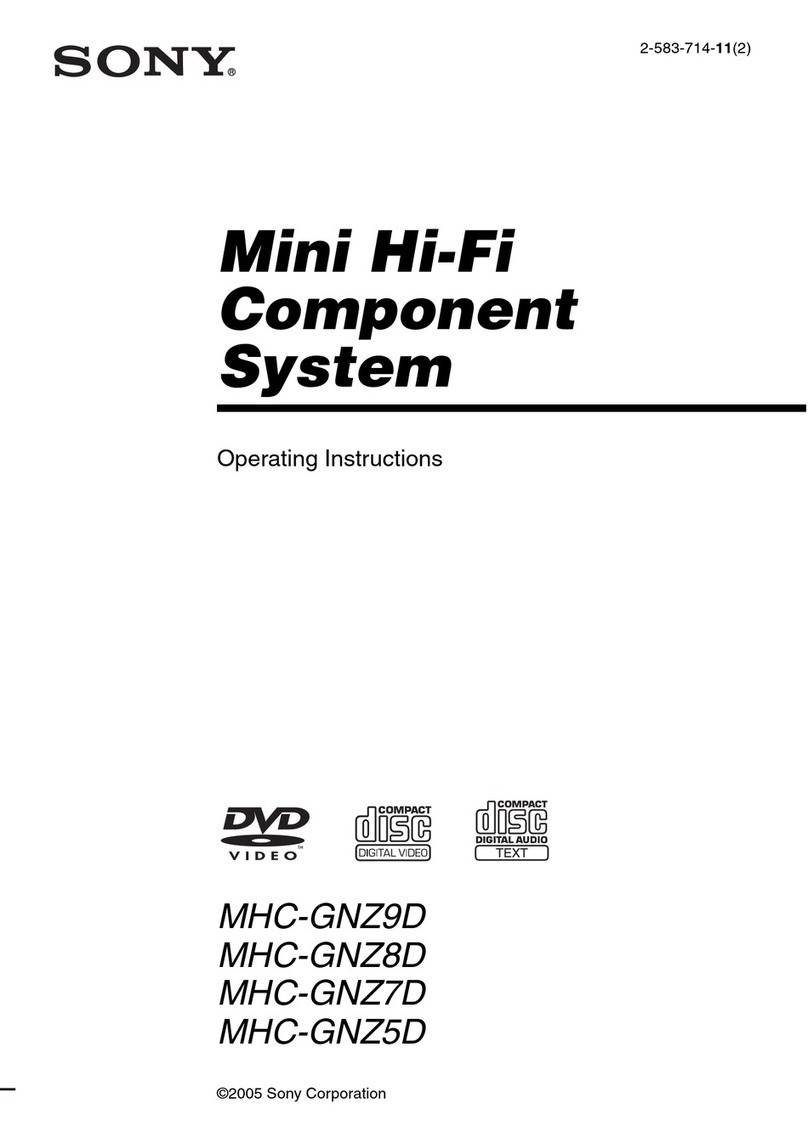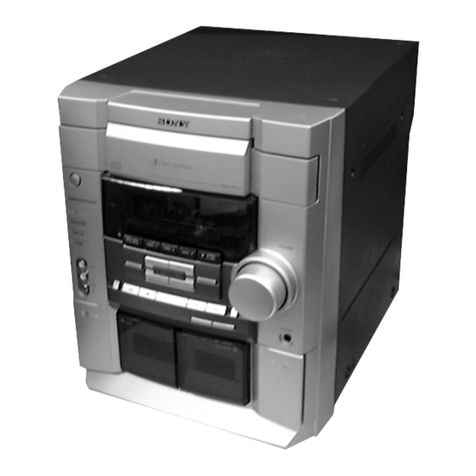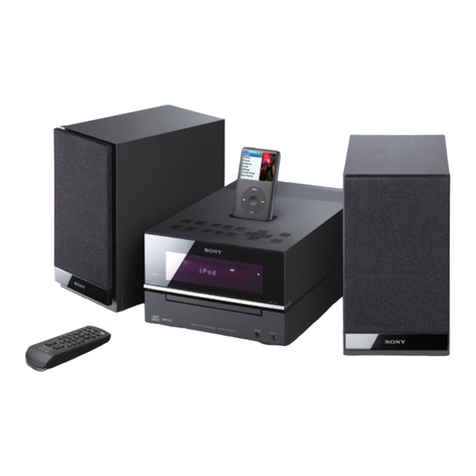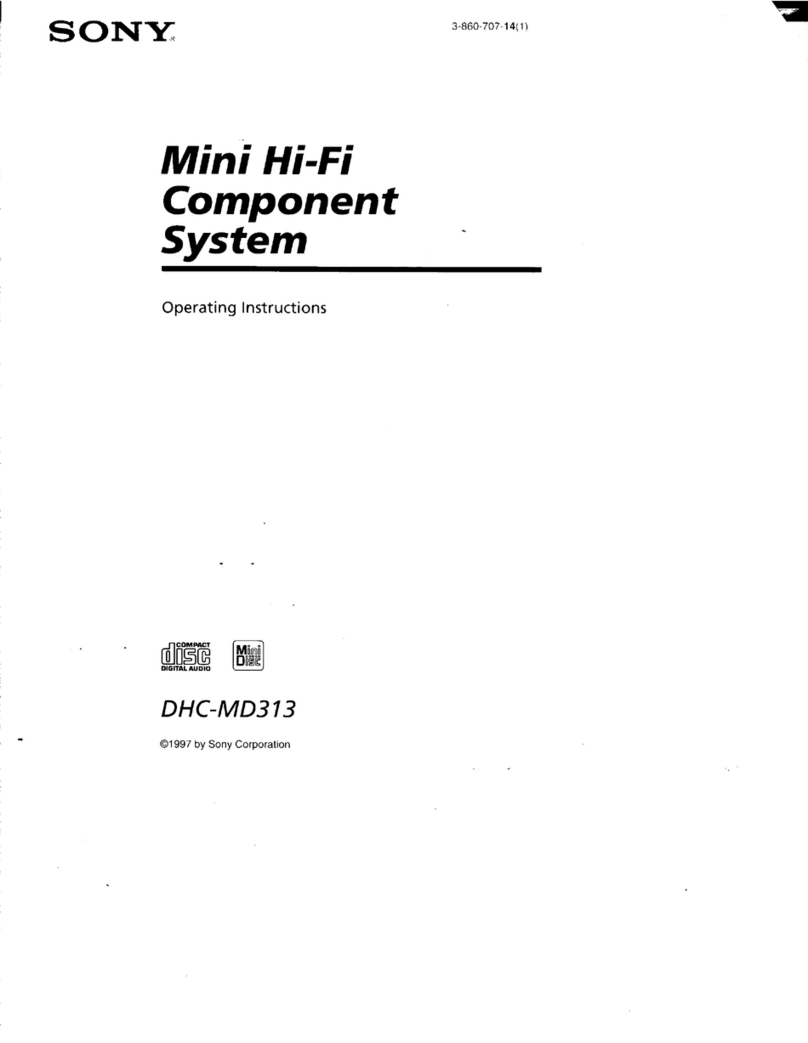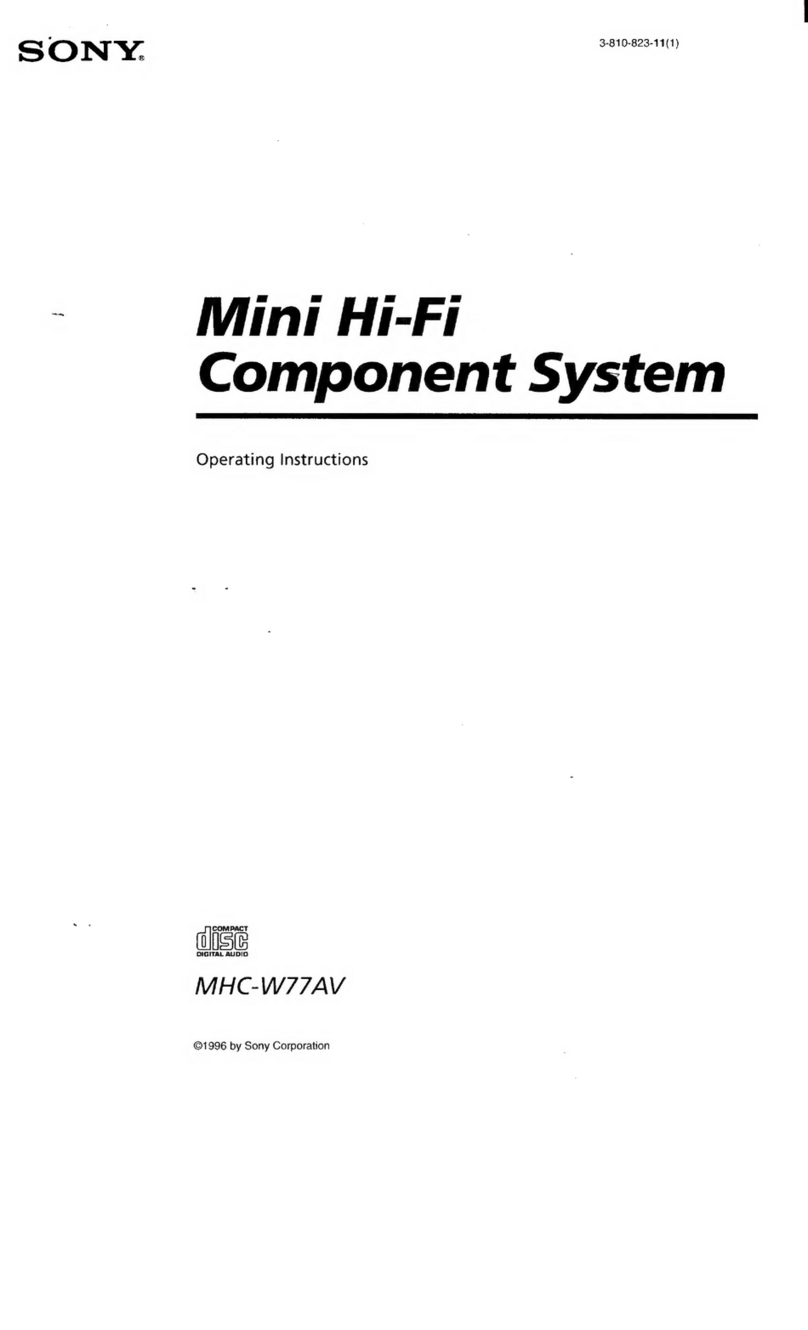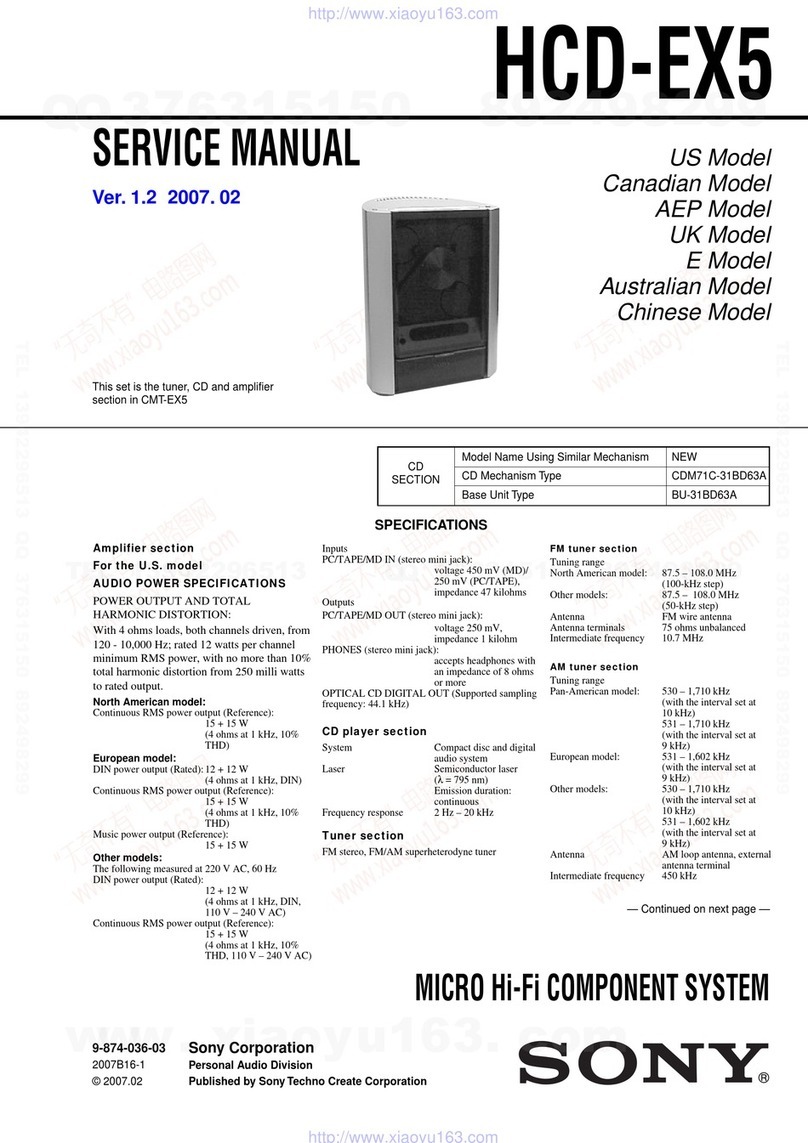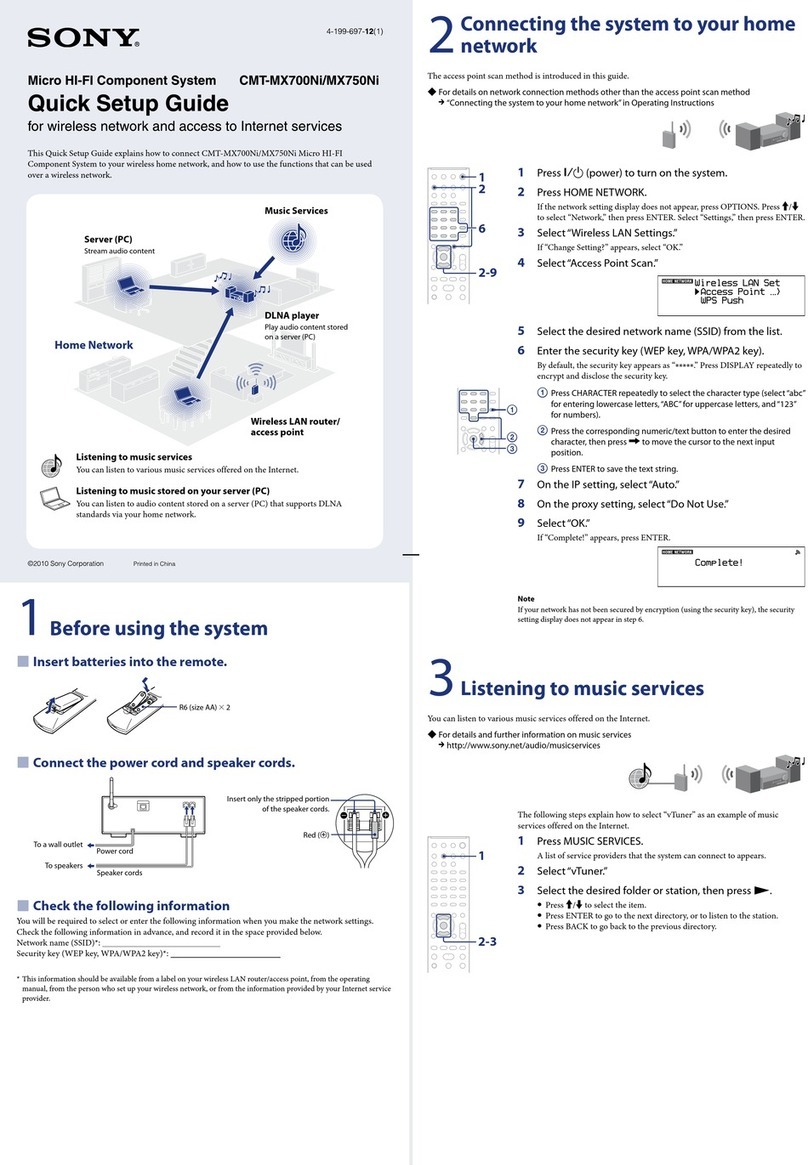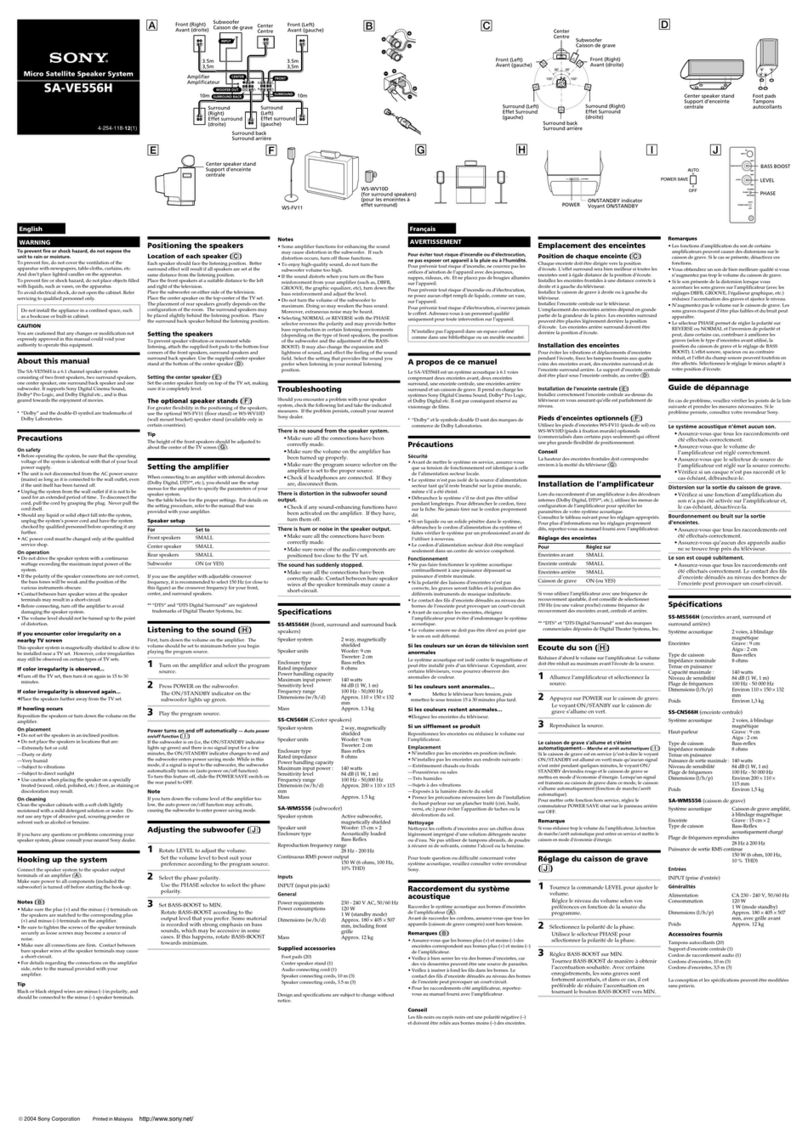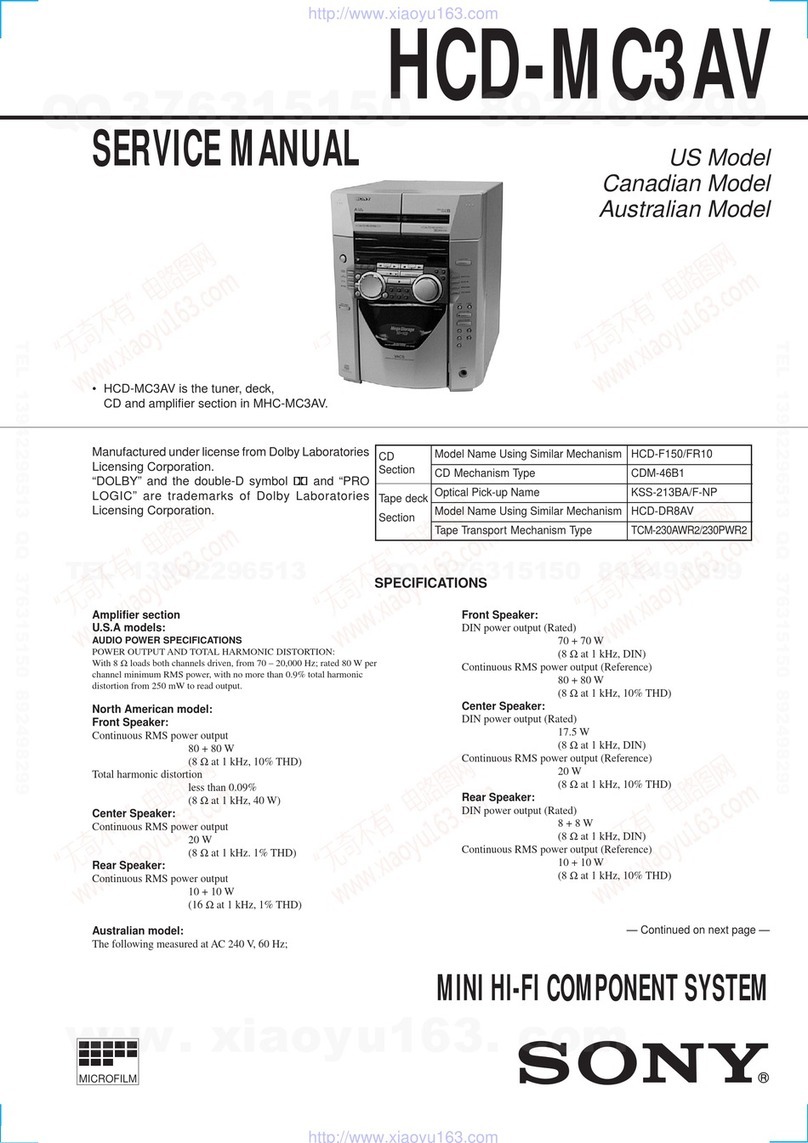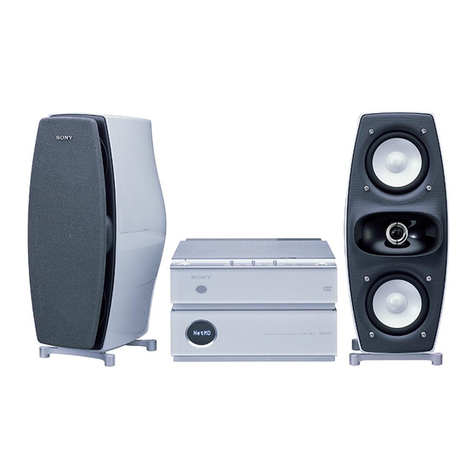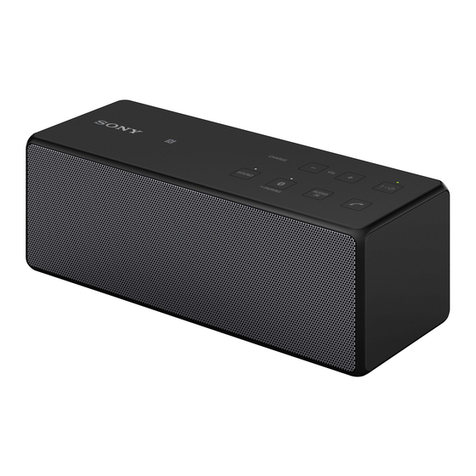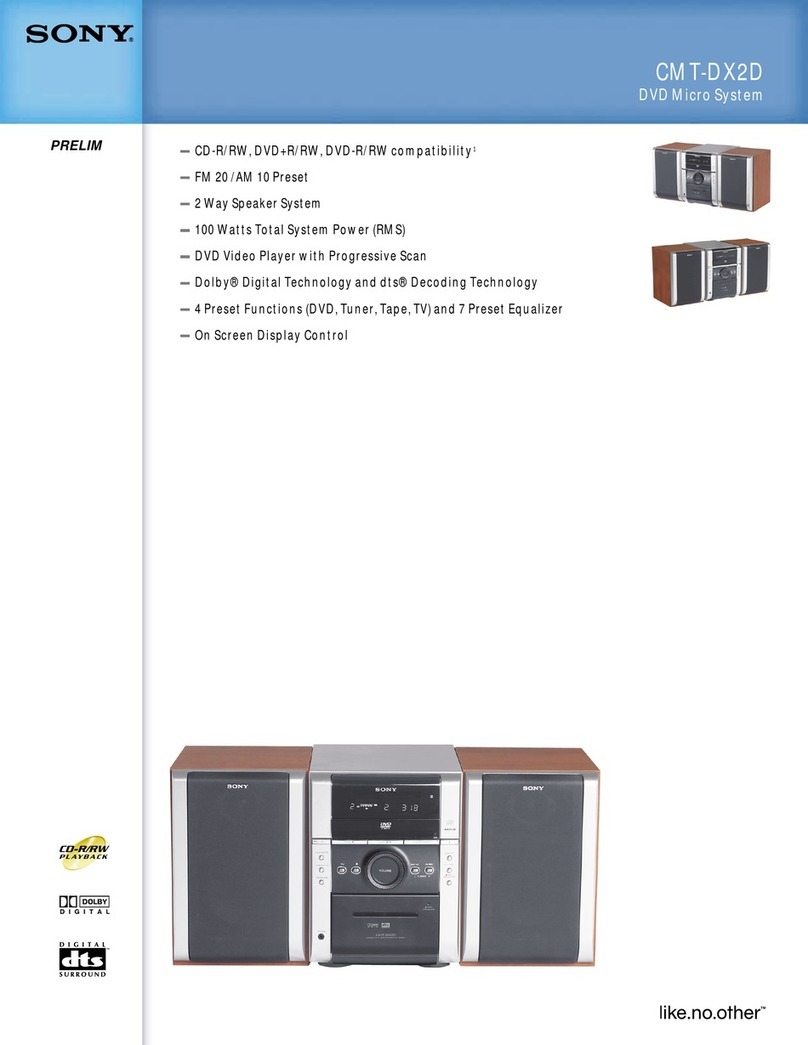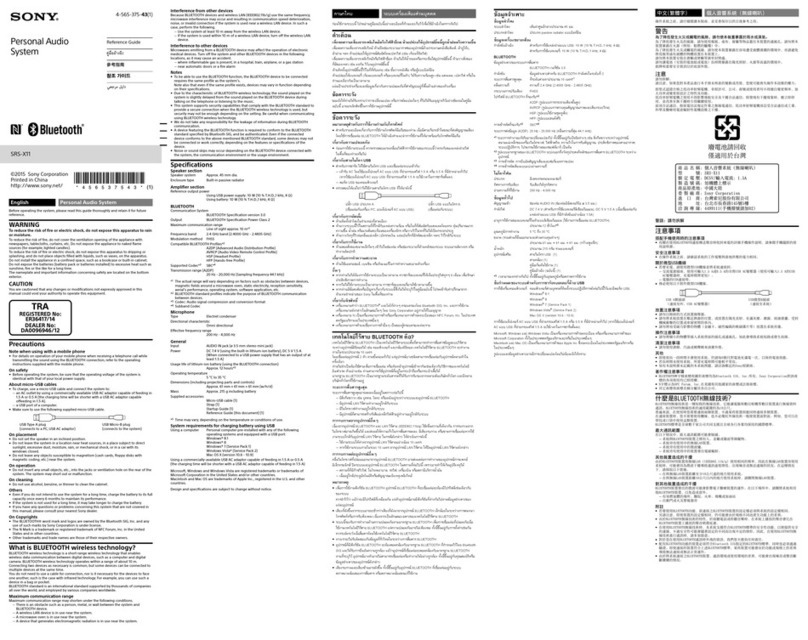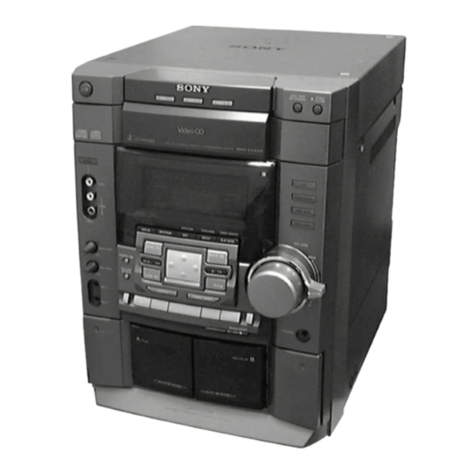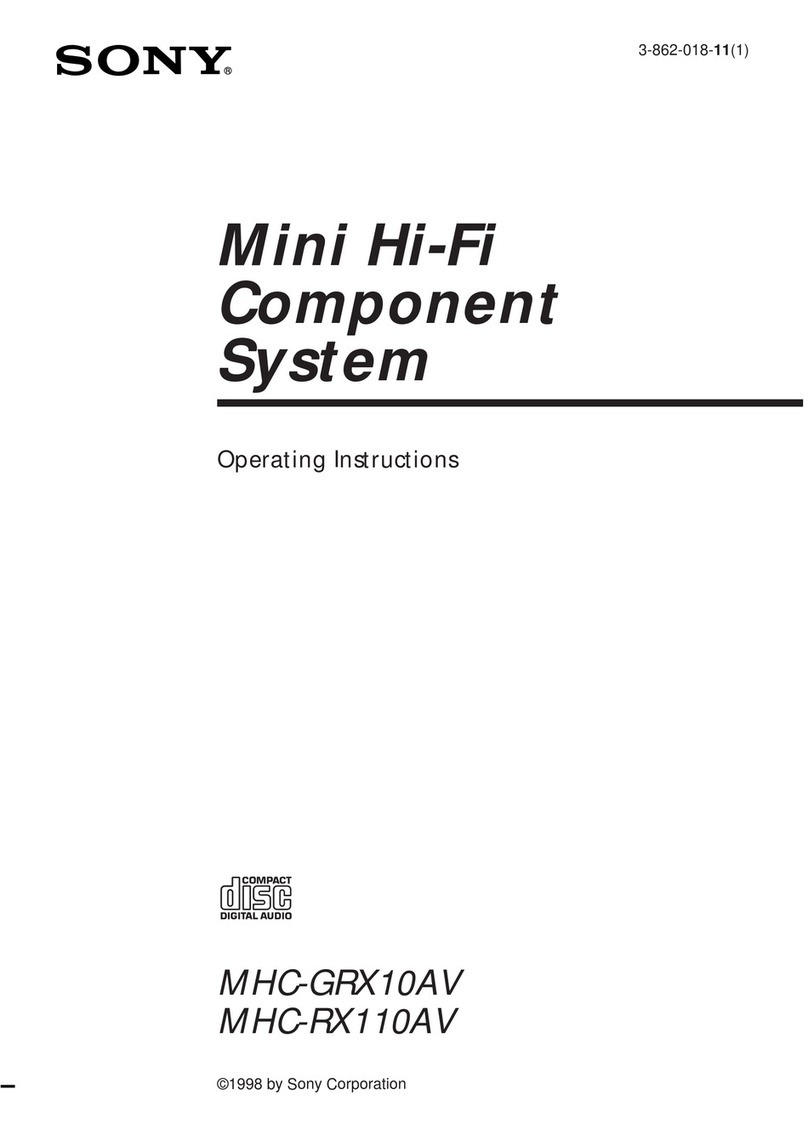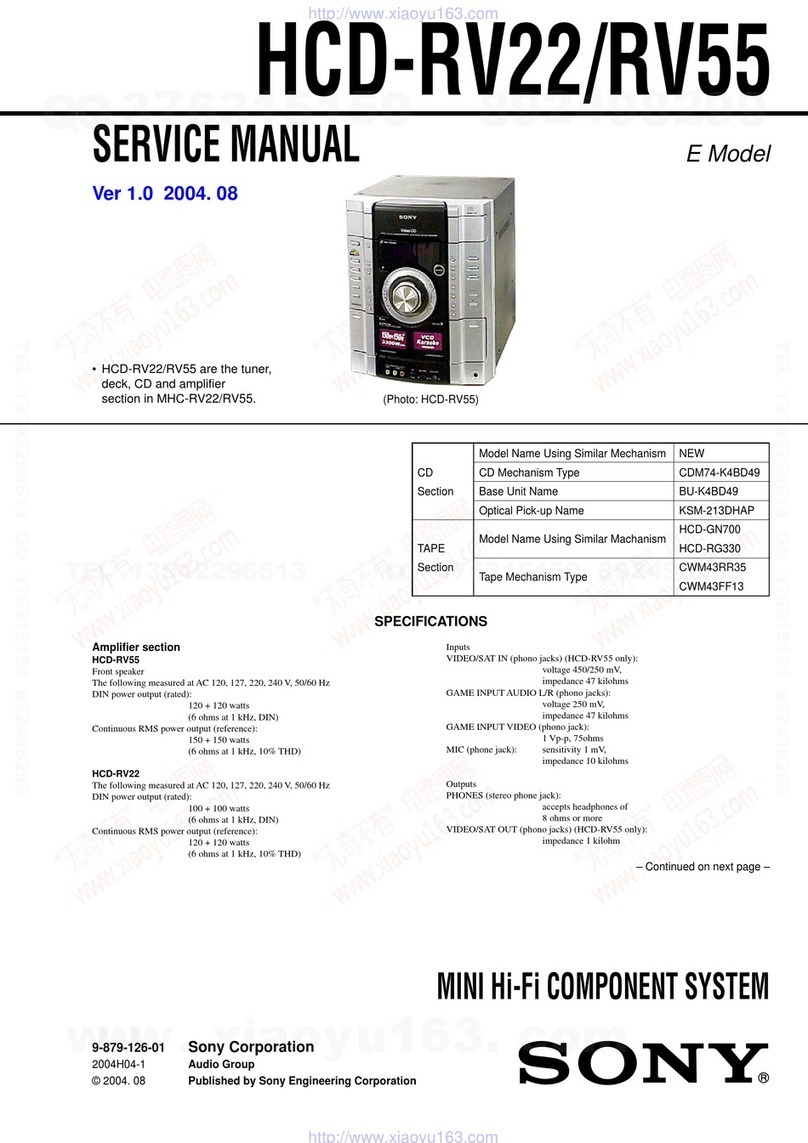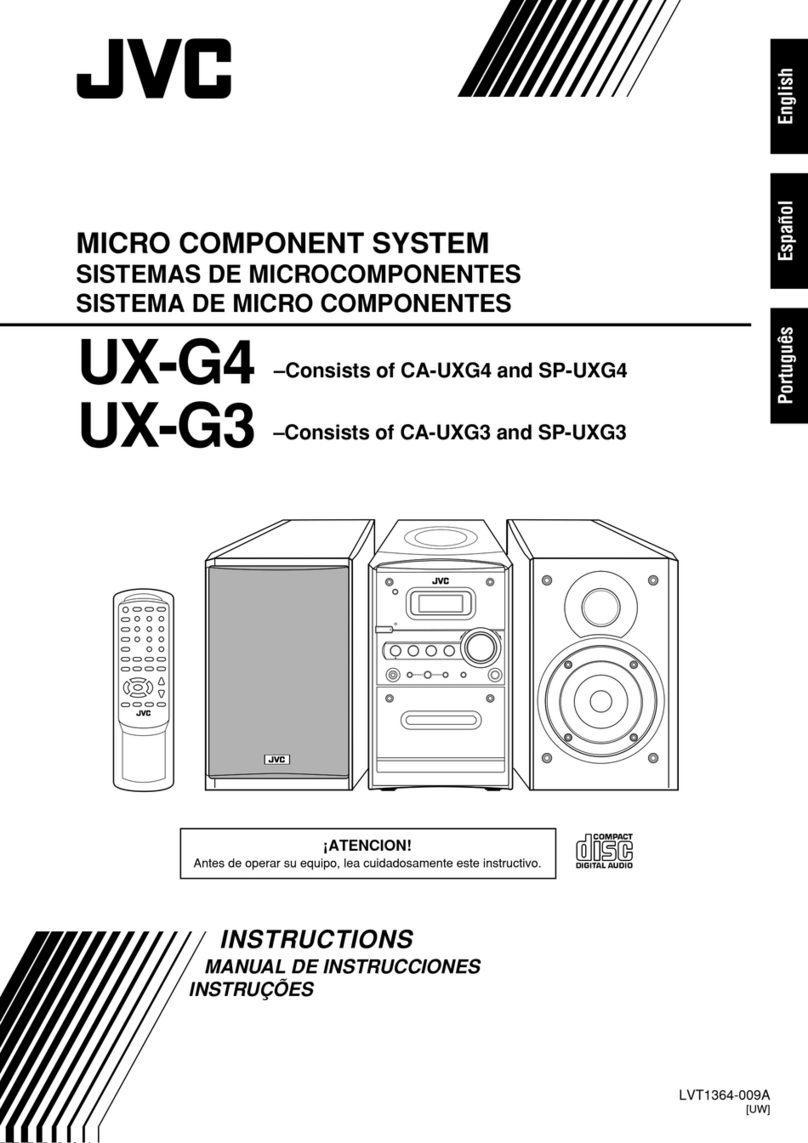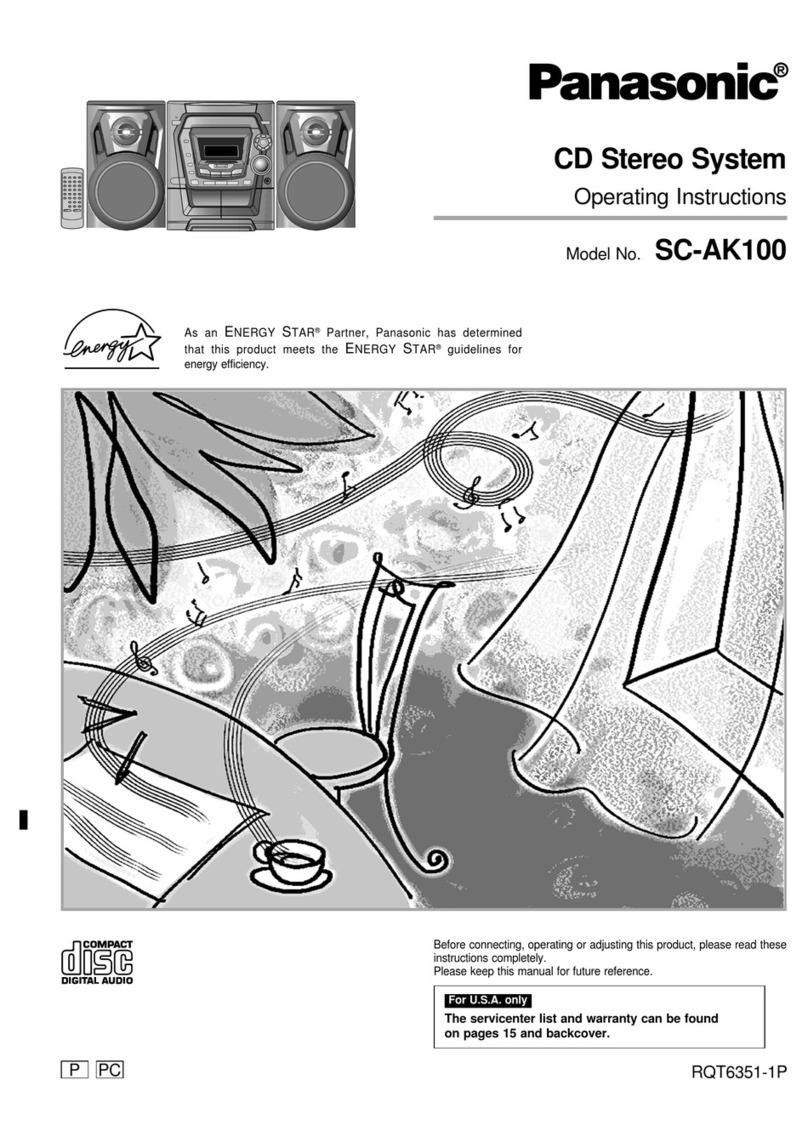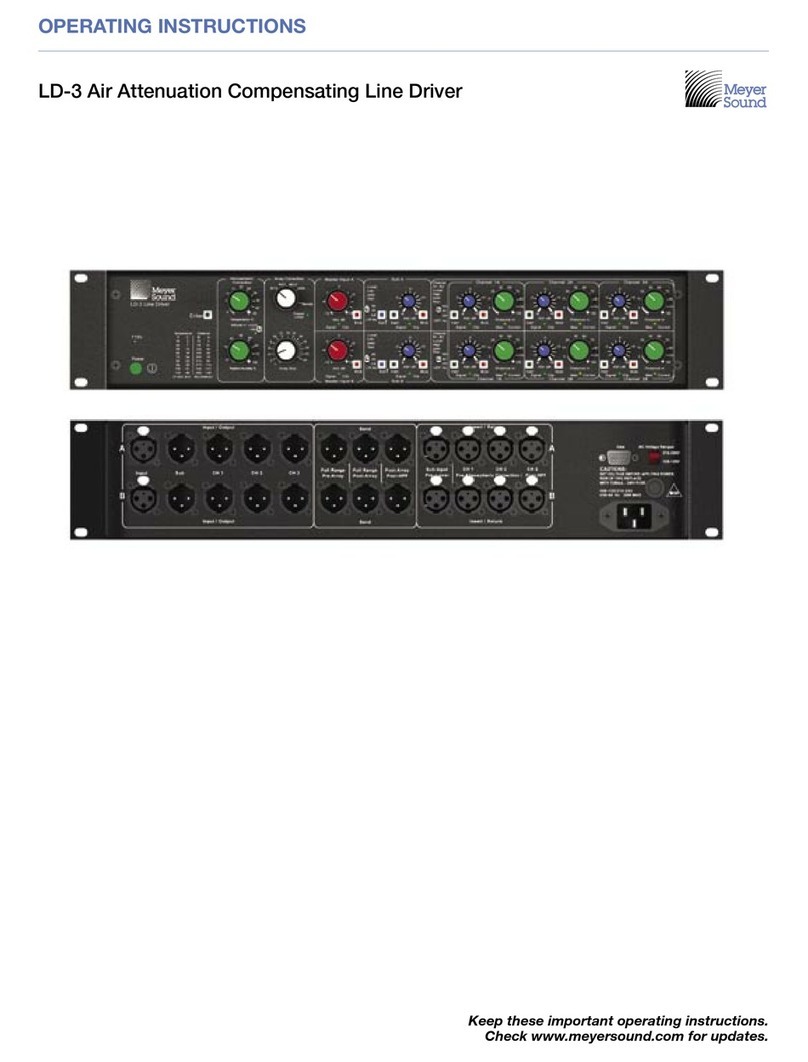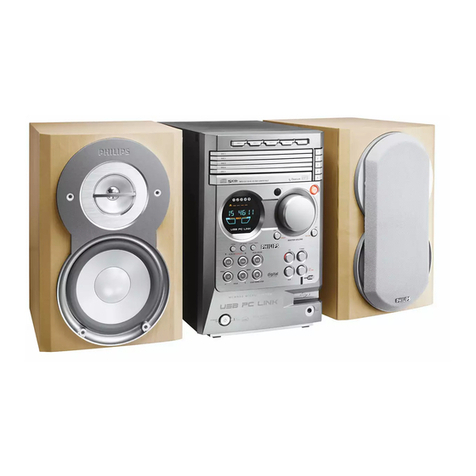4
HCD-GX255/RG170/RG470
TABLE OF CONTENTS
1. SERVICING NOTES ............................................... 5
2. GENERAL ................................................................... 6
3. DISASSEMBLY
3-1. Disassembly Flow ........................................................... 8
3-2. Case (Top) ....................................................................... 9
3-3. Door (CD)........................................................................ 9
3-4. Front Panel Section ......................................................... 10
3-5 Mechanical Deck (CWM43FF13) ................................... 10
3-6. CD Mechanism Deck (CDM74KFS-F1BD81C
(Except MX model)/CDM74KFS-F1BD84
(MX model)).................................................................... 11
3-7. Back Panel Section .......................................................... 11
3-8. MAIN Board.................................................................... 12
3-9. BD Board/CD Board ....................................................... 12
3-10. DRIVER Board, SW Board............................................. 13
3-11. Optical Pick-up Block (KSM-215DCP) .......................... 13
3-12. SENSOR Board ............................................................... 14
3-13. MOTOR (TB) Board ....................................................... 14
3-14. MOTOR (LD) Board ....................................................... 15
4. TEST MODE.............................................................. 16
5. ELECTRICAL ADJUSTMENT ............................ 20
6. DIAGRAMS
6-1. Block Diagram – CD SERVO Section – ........................ 21
6-2. Block Diagram – AUDIO/VIDEO Section – ................. 22
6-3. Block Diagram – AMP Section – ................................... 23
6-4. Block Diagram
– PANEL, POWER SUPPLY Section – .......................... 24
6-5. Printed Wiring Board
– CD Board – (Except MX model) ................................. 26
6-6. Schematic Diagram
– CD Board – (Except MX model) ................................. 27
6-7. Printed Wiring Board – BD Board – (MX model) ......... 28
6-8. Schematic Diagram – BD Board – (MX model) ............ 29
6-9. Printed Wiring Boards – CHANGER Section –............. 30
6-10. Schemtic Diagram – CHANGER Setion –..................... 31
6-11. Printed Wiring Board – MAIN Board – (Suffix-11) ...... 32
6-12. Schematic Diagram – MAIN Board (1/3) –
(Suffix-11) ....................................................................... 33
6-13. Schematic Diagram – MAIN Board (2/3) –
(Suffix-11) ....................................................................... 34
6-14. Schematic Diagram – MAIN Board (3/3) –
(Suffix-11) ....................................................................... 35
6-15. Printed Wiring Board – MAIN Board – (Suffix-12) ...... 36
6-16. Schematic Diagram – MAIN Board (1/3) –
(Suffix-12) ....................................................................... 37
6-17. Schematic Diagram – MAIN Board (2/3) –
(Suffix-12) ....................................................................... 38
6-18. Schematic Diagram – MAIN Board (3/3) –
(Suffix-12) ....................................................................... 39
6-19. Printed Wiring Board – POWER Board –
(GX255/RG170) .............................................................. 40
6-20. Schematic Diagram –POWER Board –
(GX255/RG170) .............................................................. 41
6-21. Printed Wiring Board – POWER Board –
(RG470: AEP, EE, RU) ................................................... 42
6-22. Schematic Diagram – POWER Board –
(RG470: AEP, EE, RU) ................................................... 43
6-23. Printed Wiring Board – POWER Board –
(RG470: E2, E51, AR, MX) ............................................ 44
6-24. Schematic Diagram – POWER Board –
(RG470: E2, E51, AR, MX) ............................................ 45
6-25. Printed Wiring Boards
– AUDIO, MIC, HEADPHONE Boards – ...................... 46
6-26. Schematic Diagram
– AUDIO, MIC, HEADPHONE Boards – ...................... 47
6-27. Printed Wiring Boards – CD-G Section –
(MX model only)............................................................. 48
6-28. Schematic Diagram – CD-G Section –
(MX model only)............................................................. 49
6-29. Printed Wiring Board – PANEL Section (1/2) ............... 50
6-30. Printed Wiring Board – PANEL Section (2/2) ............... 51
6-31. Schematic Diagram – PANEL Section (1/2) .................. 52
6-32. Schematic Diagram – PANEL Section (2/2) .................. 53
6-33. Printed Wiring Boards – TRANS Section –
(GX255/RG170) .............................................................. 54
6-34. Schematic Diagram – TRANS Section –
(GX255/RG170) .............................................................. 55
6-35. Printed Wiring Boards – TRANS Section –
(RG470: AEP, EE, RU) ................................................... 56
6-36. Schematic Diagram – TRANS Section –
(RG470: AEP, EE, RU) ................................................... 57
6-37. Printed Wiring Boards – TRANS Section –
(RG470: E2, E51, AR, MX) ............................................ 58
6-38. Schematic Diagram – TRANS Section –
(RG470: E2, E51, AR, MX) ............................................ 59
7. EXPLODED VIEWS
7-1. Overall Section ................................................................ 77
7-2. Back Panel Section .......................................................... 78
7-3. Front Panel Section ......................................................... 79
7-4. Key Section ..................................................................... 80
7-5. Chassis Section................................................................ 81
7-6. Transformer Section ........................................................ 82
7-7. CD Mechanism Deck Section-1
(CDM74KFS-F1BD81C (Except MX model)/
CDM74KFS-F1BD84 (MX model)) ............................... 83
7-8. CD Mechanism Deck Section-2
(CDM74KFS-F1BD81C (Except MX model)/
CDM74KFS-F1BD84 (MX model)) ............................... 84
8. ELECTRICAL PARTS LIST................................ 85
•Abbreviation
AR : Argentina model
E2 : 120V ACArea in E model
E51: Chilean and Peruvian model
EE : East European model
MX: Mexican model
RU : Russian model
